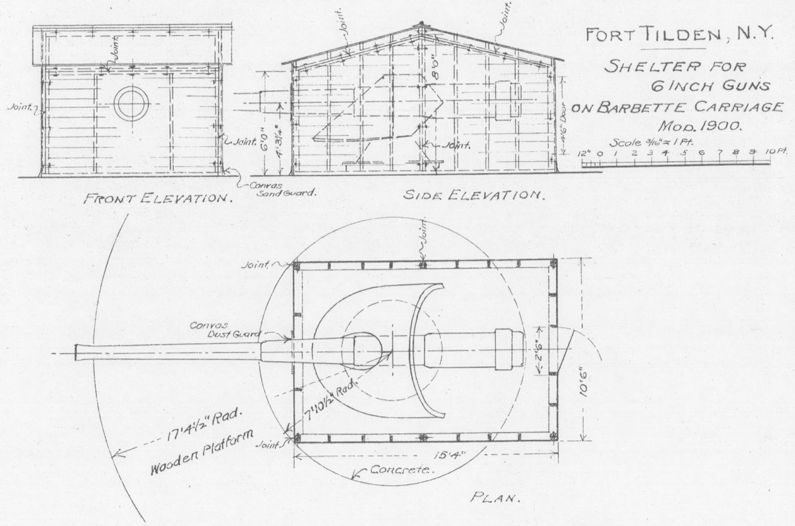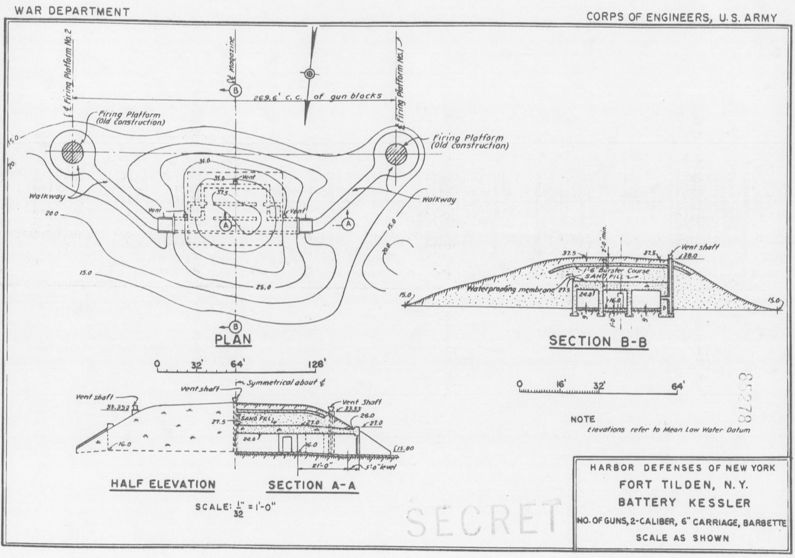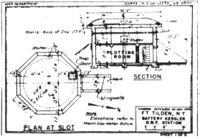Battery Kessler
|
Battery Kessler (1923-1947) - Battery Kessler was a reinforced concrete, World War I 6 inch coastal gun battery on Fort Tilden, Queens County, New York. The battery was originally named West Battery but as renamed on 1 Dec 1939, after Col. Percy M. Kessler, U.S. Army. Battery construction started 8 Feb 1917, was completed in March 1917 and transferred to the Coast Artillery for use 14 may 1923. Deactivated in 1947. World War IPart of the Harbor Defense of Southern New York. Originally built as a World War I concrete coastal gun battery with two 6" M1900 guns mounted on M1900 Barbette carriages. The carriages were mounted on concrete gun blocks with two magazines for each position set back from the gun blocks. Each gun had a wooden "takedown" shelter over that could be quickly removed for firing. The U.S. entry into World War I resulted in a widespread removal of large caliber coastal defense gun tubes for service in Europe. Many of the gun and mortar tubes removed were sent to arsenals for modification and mounting on mobile carriages, both wheeled and railroad. Most of the removed gun tubes never made it to Europe and were either remounted or remained at the arsenals until needed elsewhere. The guns and carriages that ended up in Battery Kessler were supplied from Battery Burke, Fort Hamilton (1), in March 1917 as a part of the World War I redistribution. On 19 Dec 1917 both sets of guns and carriages were abruptly transferred directly to France. This was a bit unusual because normally the carriages would remain and the guns would be sent to an arsenal for conversion to wheeled or railroad configurations. Even more unusual, the same guns and carriages were returned to Fort Tilden in 1919 after the conclusion of the war. The guns were proof fired on 14 May 1923.

World War II
 The battery was modernized with a bombproof ammunition magazine that was accepted for service on 27 Mar 1942. A modern plotting room and C.R.F. was accepted for service on 9 Jul 1943. The combined C.R.F./plotting room was an eight sided structure that housed a 22 foot wide M1916 coincident range finder on the upper level and the plotting room on the lower level with an M1904 Whistler & Hearn plotting board. Telephones were used to relay firing instructions to the gun crews. Additional fire control stations and spotting stations used telephones to relay target information to the plotting room. Later in the war, SCR-296 fire control RADAR sets were added to provide targeting during inclement weather. Deactivated in 1947.
Current StatusPart of Gateway National Recreation Area. No period guns or mounts in place.
Sources:
Links: Visited: No
| ||||||||||||||||||||||||||||||||||||||||||